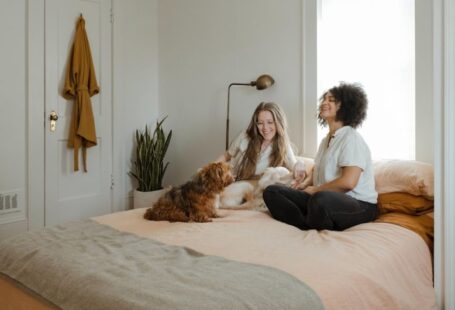Dogs, our faithful companions, are known for their loyalty and love towards their human counterparts. However, some dogs may exhibit fearfulness, which can be distressing for both the pet and the owner. Fear in dogs can manifest in various ways, such as cowering, trembling, excessive barking, or even aggression. It is essential for dog owners to understand the root causes of fear in their pets and take proactive steps to build their confidence. By implementing positive reinforcement techniques and creating a safe environment, pet owners can help their dogs overcome their fears and lead happier, more fulfilling lives.
Understanding the Root Causes of Fear
Fear in dogs can stem from a variety of factors, including genetics, past experiences, lack of socialization, or medical issues. Some dogs may be predisposed to anxiety due to their breed or genetic makeup, while others may have had traumatic experiences in the past that have left lasting emotional scars. Additionally, dogs that have not been properly socialized during their critical developmental period may exhibit fear towards unfamiliar people, animals, or environments. It is crucial for pet owners to identify the underlying cause of their dog’s fearfulness in order to address it effectively.
Creating a Safe Environment
One of the first steps in helping a fearful dog build confidence is to create a safe and secure environment for them. This includes providing a comfortable living space with access to food, water, toys, and a cozy bed. Additionally, it is important to establish a routine for your dog that includes regular feeding times, exercise, and play. Consistency and predictability can help reduce anxiety in dogs and make them feel more secure in their surroundings. By creating a safe and structured environment, pet owners can help their dogs feel more at ease and less fearful.
Positive Reinforcement Training
Positive reinforcement training is a powerful tool for building confidence in fearful dogs. This training method focuses on rewarding good behavior with treats, praise, or toys, while ignoring or redirecting unwanted behavior. By using positive reinforcement techniques, pet owners can help their dogs associate new experiences with positive outcomes, which can boost their confidence over time. For example, if a dog is fearful of loud noises, such as thunderstorms or fireworks, pet owners can use treats and praise to create a positive association with those sounds. Through consistent training and positive reinforcement, fearful dogs can learn to overcome their fears and become more confident in various situations.
Gradual Exposure to Fearful Stimuli
Gradual exposure to fearful stimuli is another effective way to help fearful dogs build confidence. This technique involves introducing the dog to the source of their fear in a controlled and gradual manner, allowing them to become desensitized to it over time. For example, if a dog is afraid of strangers, pet owners can start by having a familiar friend or family member visit and gradually introduce them to new people in a calm and positive way. By slowly exposing the dog to the source of their fear and rewarding them for calm behavior, pet owners can help their dogs overcome their fears and build confidence in social situations.
Building Confidence Through Play and Exercise
Play and exercise are essential components of a dog’s physical and mental well-being, and can also help build confidence in fearful dogs. Engaging in interactive play sessions and regular exercise can help dogs release pent-up energy and reduce anxiety. Additionally, playtime can strengthen the bond between pet and owner, providing a sense of security and comfort for the dog. By incorporating fun and stimulating activities into their daily routine, pet owners can help their dogs feel more confident and secure in themselves and their environment.
Encouraging Independence and Autonomy
Encouraging independence and autonomy in fearful dogs can also help boost their confidence. Allowing dogs to make choices and decisions, such as choosing a toy to play with or where to rest, can help them feel more in control of their environment. Additionally, providing opportunities for dogs to explore new environments and experiences at their own pace can help them overcome their fears and build confidence. By giving fearful dogs the freedom to make choices and explore their surroundings, pet owners can empower them to become more self-assured and resilient in the face of new challenges.
Conclusion: Empowering Your Fearful Dog
Fearfulness in dogs can be a challenging issue to address, but with patience, understanding, and the right approach, pet owners can help their dogs build confidence and overcome their fears. By creating a safe and structured environment, using positive reinforcement training, gradually exposing dogs to fearful stimuli, incorporating play and exercise into their routine, and encouraging independence and autonomy, pet owners can empower their fearful dogs to lead happier, more confident lives. Remember, building confidence in a fearful dog takes time and consistency, so be patient and supportive throughout the process. With dedication and love, you can help your fearful dog become the confident and courageous companion they were meant to be.





